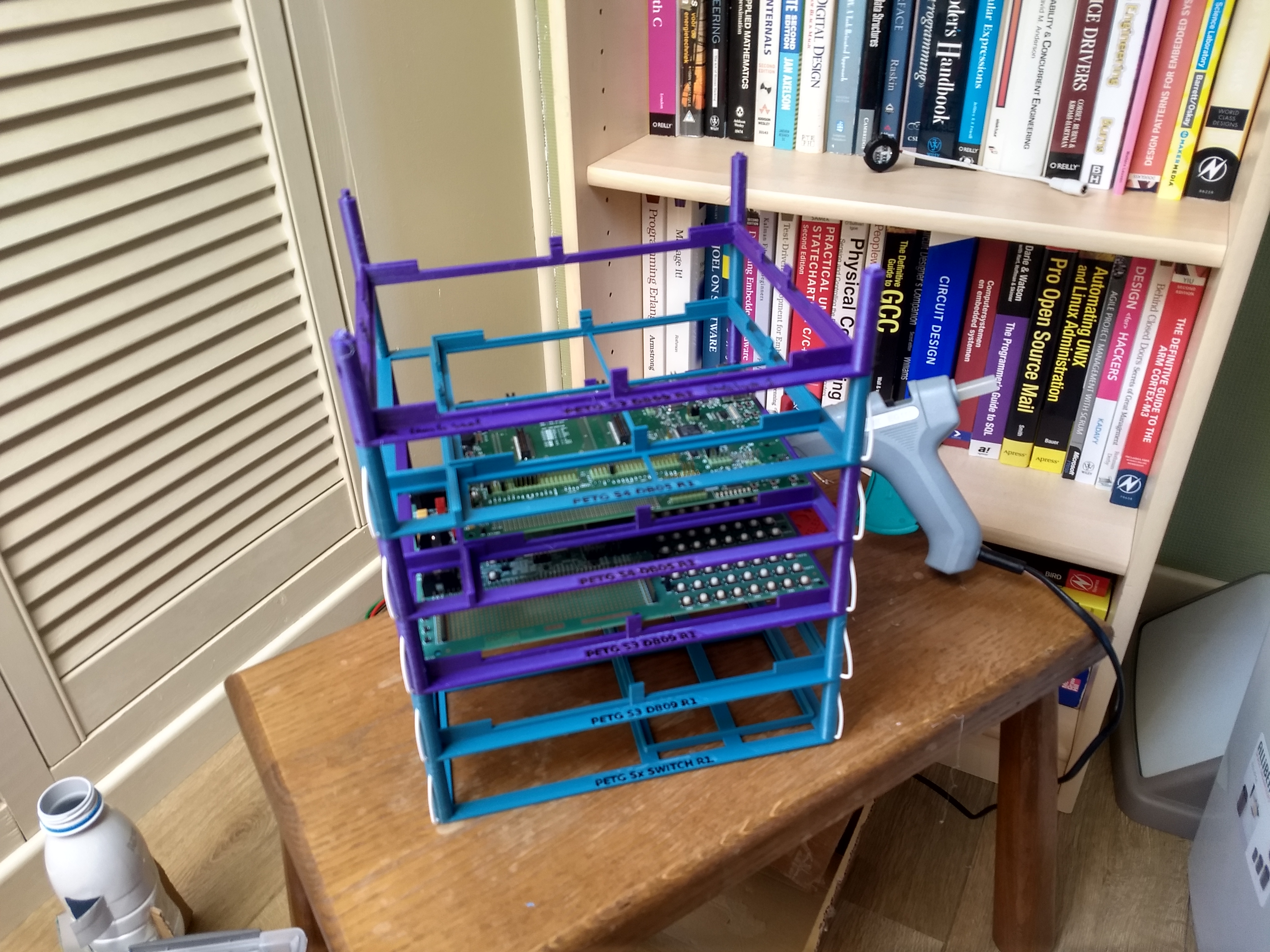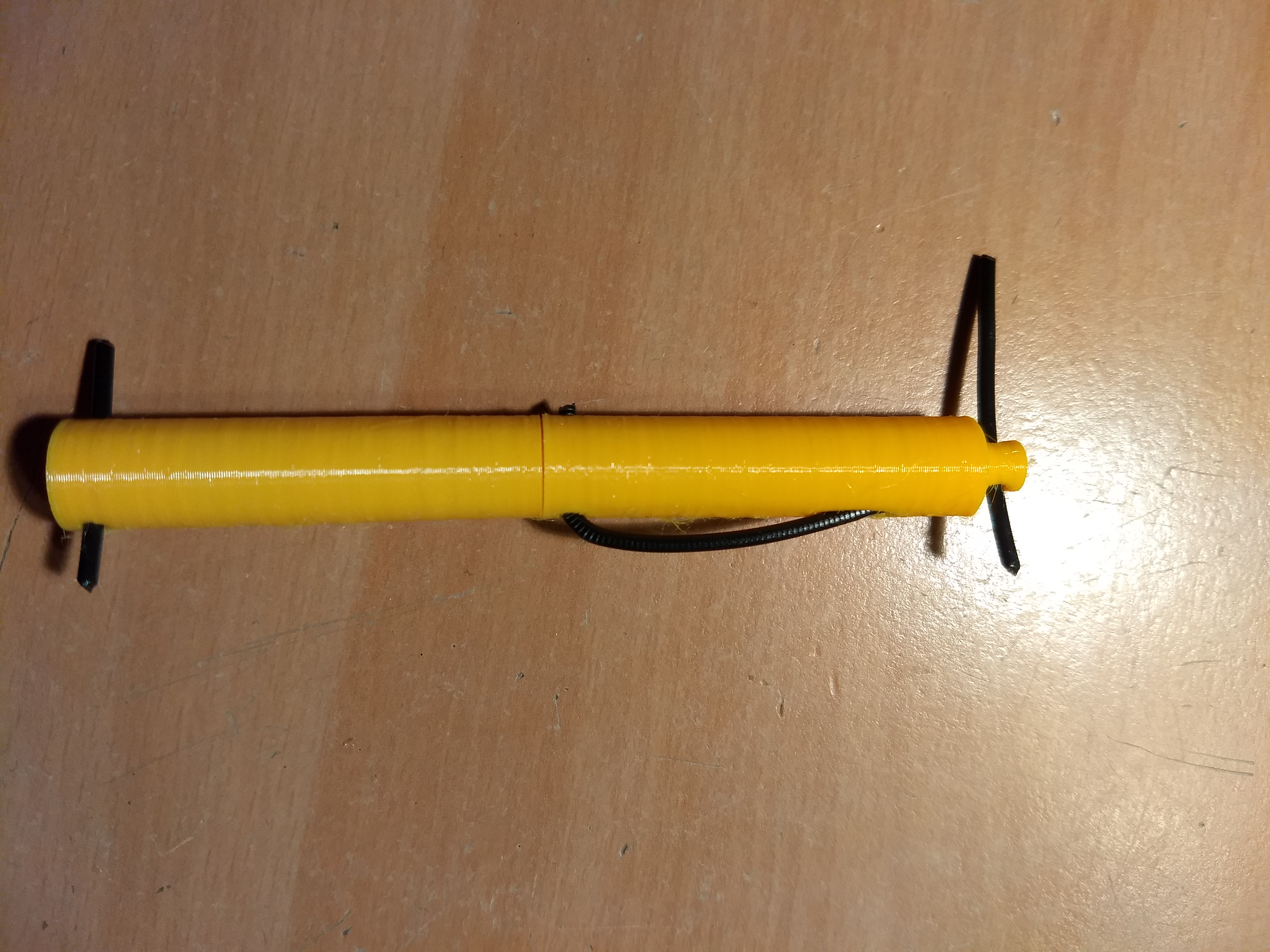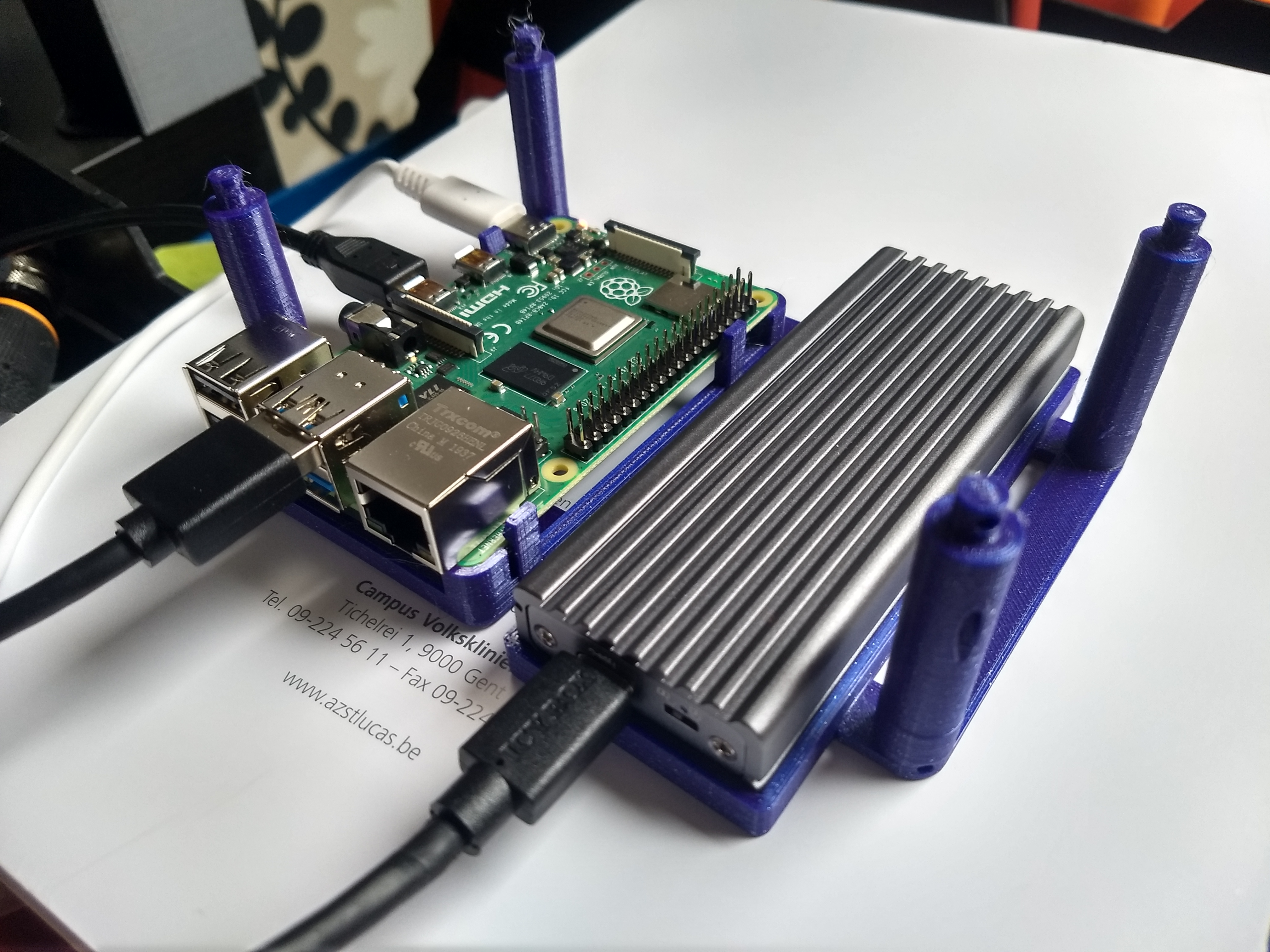Board stacks

At home and at work, I always tend to have around 5 small development boards on my desk. In a fixed setup with identical boards, metal or plastic standoffs can be a nice solution to build a stack that reduces the footprint on desk and avoid a spiderweb of cables.
In reality, the boards are of different sizes, and standoffs still cost a few euro's each. I knew I could do better, using a 3D printer and some parametric CAD modeling.

I found a design on thingiverse.com, and improved it in several ways:
Simple mechanical locking between levels
I added a simple way to mechanically lock the different levels of the stack using pieces of filament cut and bent to shape. Inserting to lock and pulling the filament back out to unlock is quite easy, and quickly done for all four corners.

Each standoff cylinder has two endings that mate, the bottom end has a hole, and the top end has a smaller diameter that mates with the hole in the bottom.
I placed two 1.75 diameter holes perpendicular on the cylinder, these align when two standoff cylinders are stacked, and a piece of filament can be inserted to lock them together.
There is also a sloping hole near the top of the standoff, into which the other end of the locking filament is inserted. This way the locking bit can dangle next to the hole conveniently until it you want to insert it again.
To create the piece of lock-filament, I insert the filament into the sloping hole so that it curls away from the standoff. I then heat it with a lighter to soften it, and then bend it 90 degrees, and blow on it to cool it down. Then I clip it so the bent end is about 8mm long. You can then turn the piece of filament so that it is pointing towards the hole.
Snap PCB in place
I got rid of the screws that fix the PCB's to the carrier levels for a very practical reason. Screw+nut tend to come loose, and the cheapest metal fasteners can drop on the exposed circuit boards and cause short circuits. Mounting screws also cost money and time to mount.

To overcome this, I added simple hooks into the design that keep the PCB in place in the Z dimension. A simple support about reaching around 1mm under PCB and around the PCB fixes the two other dimensions.
Design files
You can find the STL file to print at https://www.prusaprinters.org/prints/107661-screwless-raspberry-pi-stacking-jig
Liked something? Worked on something similar? Let me know what you think on Mastodon!
You can use your Mastodon account to reply to this post.